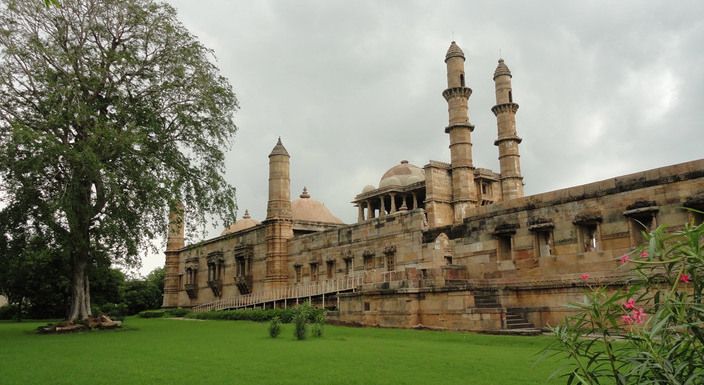Things to do in Champaner
The real tragedy in this world is, how we tend to forget once colossal and grand structures, and discard them as forgotten. These forgotten structures are what remains of our past, which makes us connected and humbled. Yet, we have continuously disregarded some remnants of our past and moved on.
The ancient city of Champaner is one such fine example. Located in Gujarat, this archaeological site has been restored by the ASI but still has not been able to garner the crowd that it deserves.
It is imperative to visit this forgotten town, as it has amazing insights into the history of our country and this state. The planning and architecture are absolutely brilliant.
History
As you step into this grand archaeological site, it becomes quite obvious that it had served a very important purpose during the years gone by. It is popularly believed that this was a fortress town during the 8-9th century and was first ruled by the Solanki Kings. After the rule of the Solankis declined the town fell into the Khichi Rajputs. This little information itself speaks volumes about the sheer importance and the anecdotes that this site commands.
The town of Champaner- Pavagadh came under attack by Ahmed Shah in 1419. However, this town resisted the siege and stood tall. Then Sultan Mahmud Begda launched an intensive 20 months siege against the Rajput Kings in 1484. This siege was successful and the town was captured by the Sultanate rule from the Rajputs rule. It was thus, briefly named to Muhammadabad, and served as the capital of the Gujarat Sultanate in 1485.
About 50 years later, the town once again came under attack, when the Mughal ruler Humayun wanted to capture it and defeat the Sultanate rule. The Mughals won the battle and then started the decline of this glorious place.
Among the various other conquests of the Mughals, they forgot about Champaner and it became an obscure and isolated town.
Champaner was later ruled by Marathas and even the Britishers for a brief period of time, bit never again was the grandeur of this site every restored.
Now it has become a UNESCO recognised world heritage site and rests atop the picturesque Pavagadh hills.
There are shreds of evidence to show that this site has been alive since the stone ages. Various artefacts have shown the possibility of life since that time.
The Lakulisha Temple which is decorated with beautiful imagery of deities like Brahma, Vishnu, Indra, and others, is the oldest historical monument that has been found till date. This temple structure dates back to the 10th-11th Century.
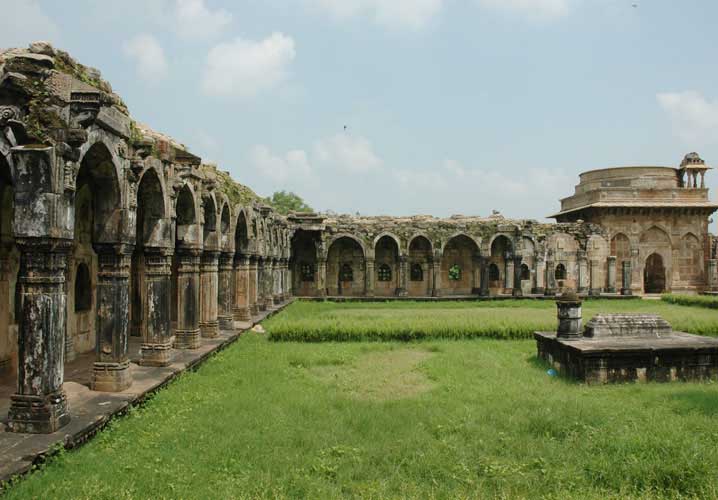
Archaeological Park
One of the shocking facts about this place is that both the locals and the tourists are not aware of this important heritage site. It seems that people even now have forgotten the rich history that this place boasts of. It was named a UNESCO heritage site in 2004, which created some awareness but still failed to lure the kind of curiosity that such a site should have.
Due to the many conquests and rulers in Champaner, there are several mosques and temples in this place. The mosques radiate a confluence of the Islamic and Hindu styles of architecture and tell the tales of how diverse the culture of India was.
Monuments
Stepping foot into Champaner seems like one has travelled back in time. The mighty walls surround the perimeter as they are interrupted by massive gateways, which are beautifully inscribed. One can find few restored houses among the ruins, which gives one a sense of life during that time.
The place is covered with brilliant mosques, great cenotaphs and majestic step walls, which completes this fairytale-like-city.
Many also believe that this town was abandoned because of a curse that gripped it about 500 years ago. Such fascinating anecdotes are intensified as one actually walks through the place.
Many foreign travellers like Duarte Barbosa and others have mentioned Champaner in their accounts. It also finds a mention in Ain- a- Akbari, which was a book commissioned by King Akbar.
A royal palace is also supposed to have adorned this place, complete with a Persian garden, but now only ruins remain.
This town and its architectural style is a perfect example of how designs were before the Mughal rule. It is a mix of traditional Gujarati with a hint of Islamic designs and a pinch of Hindu styles. There are also several wells that line up this town, one step well can be found just being the Jami Masjid.
One of the most prominent mosques inside this complex is called the Jami Masjid.
Jami Masjid

The Jami Mosque is an excellent work in Islamic architecture. Many even call it one of the finest Islamic architecture that India had witnessed. This mosque stands frame perfect as the beautiful latticework never fails to catch the eyes of any visitor. The exterior is surreal and has about 172 pillars, and minarets that rich up to 100 feet. Many even say that this kind of architecture and the Jami Masjid, in particular, served as an inspiration for the Mughal rulers, who implemented the same kind of architecture in their other monuments across India.
The interior of the mosque is filled with dazzling domes that are so beautifully decorated.
There are other mosques which are also exquisite. Most of them are built atop high foundations called plinths which have elaborate Islamic designs. The 3 / 5 / 7 mihrabs (standing place for the high priest) are covered with lovely flowers and foliage motifs.
The important mosques to see are ami Masjid, Shahar-ki-Masjid, Kevada Masjid, Nagina Masjid, Lila Gumbaj-ki-Masjid, Ek Minar-ki-Masjid, Panch Mahuda-ki-Masjid, Bawaman Masjid, Khajuri Masjid, Iteri Masjid and Kamani Masjid.
Tomb of Sikander Shah
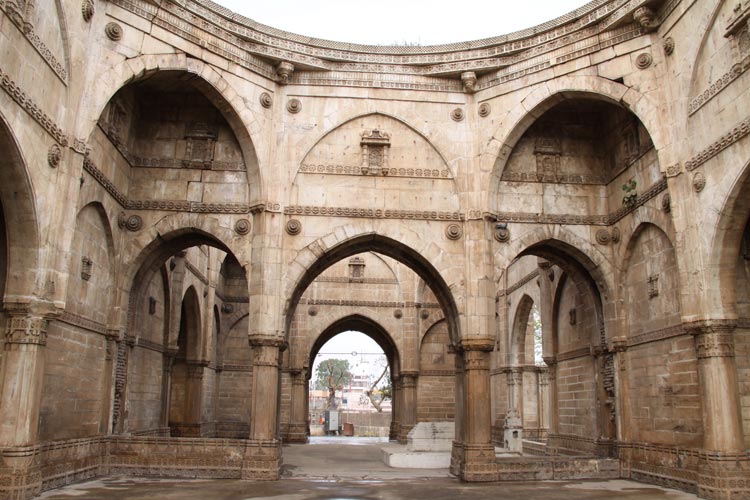
The tomb rests inside a circular structure. The complex is a little away from the other monuments and has a lovely airy feel to it. The breeze whooshes past the pillars and circles around to make the place pleasant. The town itself has some great latticework, which is mesmerising for something that is about 500 years old.
One Column Mosque
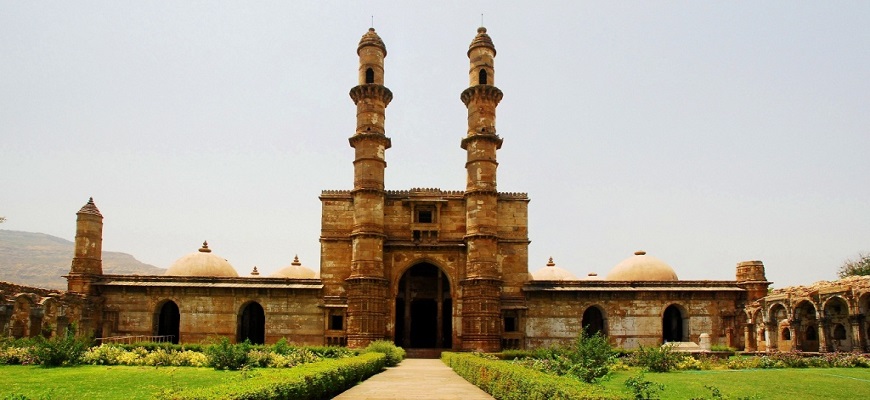
This quirky mosque stands tall among the other monuments. It overlooks the green hills of Pavagadh and is only one big tower-like structure. One cannot go inside the mosque as it is permanently locked. But the exterior carvings beneath the balcony area is exquisite.
The sides of the pillar that forms the mosque keep increasing on each story.
The mosque itself as a different feel to it, as it just one pillar surrounded by just green hills and nothing else. There is also a well and a tomb beside the pillar.
Kevda Mosque
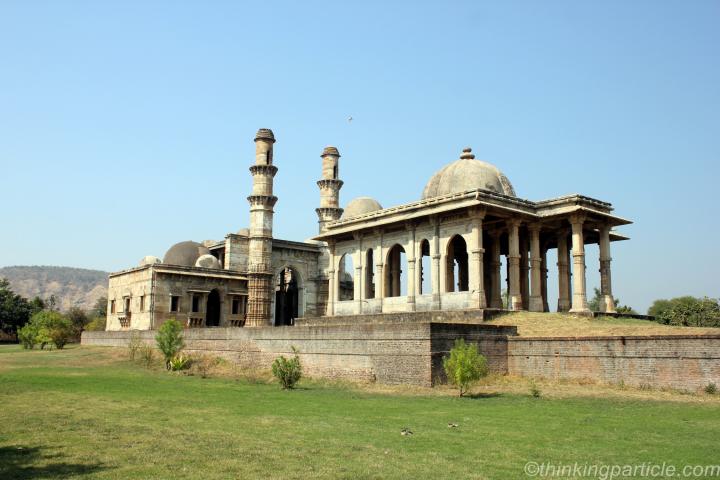
This mosque is more famous for its cenotaph then the for the mosque itself. It is not too far away from Jami Masjid and is located just across the bushes that hide away this place.
The Roman style cenotaph is mesmerising and a treat to the sore eyes.
The view from the top of the Kevda Mosque itself is breathtaking, especially during sunrise and sunset.

